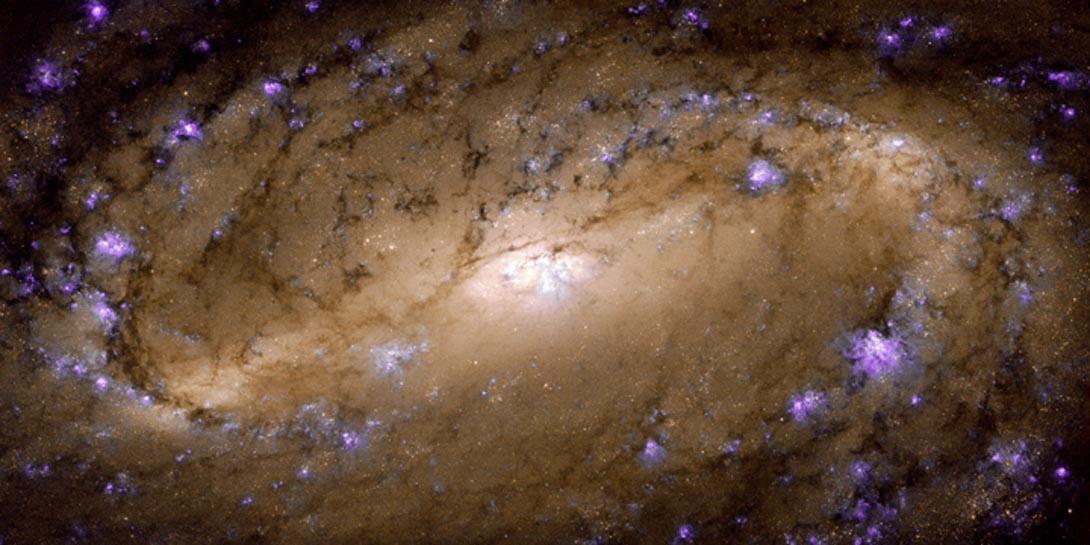
Spiral Galaxy
RA 9h 32m 10.11s Dec 21° 30' 5.72"
Leo
30 million light years
9.0
11.8 x 4.5 arcmin
3.29 x 1.63 arcminutes
North is 97.7° right of vertical
ESA/Hubble & NASA, L. Ho et al.
April 29, 2019
ABOUT THIS IMAGE:
Few of the Universe's residents are as iconic as the spiral galaxy. These limelight-hogging celestial objects combine whirling, pinwheeling arms with scatterings of sparkling stars, glowing bursts of gas, and dark, weaving lanes of cosmic dust, creating truly awesome scenes - especially when viewed through a telescope such as the NASA/ESA Hubble Space Telescope. In fact, this image from Hubble frames a perfect spiral specimen: the stunning NGC 2903.
NGC
2903 is located about 30 million light-years away in the constellation
of Leo (The Lion), and was studied as part of a Hubble survey of the central
regions of roughly 145 nearby disc galaxies. This study aimed to help
astronomers better understand the relationship between the black holes
that lurk at the cores of galaxies like these, and the rugby-ball-shaped
bulge of stars, gas, and dust at the galaxy's center - such as that seen
in this image. NGC 2903 was discovered by William Herschel on Nov 16,
1784.